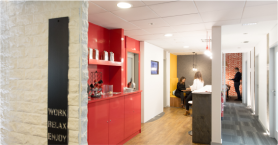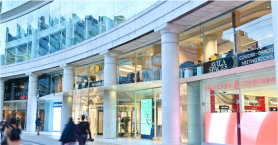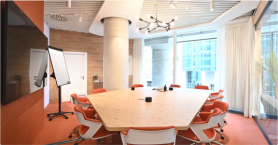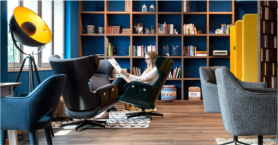2. Hygiene Label - Hands and Mask Use2.01 – Alcoholic solution dispenser - there are several alcohol-based hand sanitizers, so that you can wash your hands regularly. (1) 2.02 – If people come together, we will recommend using a face mask, and we will promote social distancing. (1) 2.03 – Avoid sharing personal items such as pens, chargers, mobile phones, among others. (1) 2.04 – If you experience any signs of high fever or persistent cough alert us and stay at home. Then, we can monitor other users and employees. (1) 2.05 – Hands hygiene procedure must be complete and regular. Wash your hands for at least 20 seconds or use an alcohol-based antiseptic solution (SABA) with at least 70% alcohol. (1) 2.06 – Respiratory procedures are critical: if you cough or sneeze, cover your mouth and nose with the bend of your elbow, or use a tissue that should be immediately placed in the waste container. (1) 2.07 – The use of gloves is not recommended, as it is considered a viral spreading agent. Clean your hands after touching surfaces and never bring them to your eyes, nose or mouth. (1) 2.08 – Our hygiene plan was reinforced with the presence of our team "Work Safe”, who clean and disinfect surfaces at least once a day. (10) 2.09 – Workstations will be cleaned and disinfected at the end of the day, or whenever users leave their place and all individual papers and trash are disposed of safely in the recycle bin. (1) 2.10 – Each area will have its own cleaning material and disposable cleaning cloths. (1) 2.11 – Our team "Work Safe” is aware of the new procedures and received clear instructions on what they can do to help you. (10) 2.12 – Display a detailed record of inspections, according to the cleaning and sanitation plan, completed by the responsible for cleaning and hygiene. It should include a systematic log of the name of the person and the regular cleansing activities. (1) 2.13 – Wet cleaning, without using a vacuum cleaner. If necessary, use a wet vacuum. (1) 2.14 – Waste and recycling containers, with non-manual opening and with a plastic bag inside. (13) 2.15 – Cleaning of common and frequently touched surfaces: (1) - For disinfecting surfaces that are touched by many people we use a disinfectant-based detergent, which contains simultaneously detergent and disinfectant (two in one). This product can be liquid, gel, foam or spray. - All areas are initially cleaned with water and detergent, and then a bleach solution is spread evenly, which should act for 10 min, according to the manufacturer or supplier's instructions. - The surfaces will be rinsed with hot water and then we let them dry. - We use common or household detergents. - The most used disinfectant is bleach, with at least 5% free chlorine in its original form and with at least 70% alcohol. - The bleach solution is diluted by 0.1%, in proportion of one part of bleach to 99 equal parts of water. - We also use disinfection products in the form of wipes moistened with disinfectant and supplied in a special dispenser. 2.16 – Clean and disinfect toilet facilities: (1) - We use different cleansing cloths for the washbasins, areas around them and for toilet seats. - We follow the following cleansing sequence: - Washbasins – firstly the taps, secondly the sink and then all the surfaces around them. Clean the inside of the toilet bowl – Flush the toilet and begin scrubbing the bowl using the toilet brush only. Do not pour bleach or ammonia into the urine, as it causes a gaseous reaction which can be very harmful. Apply the detergent with a disinfectant base and let it act for at least 5 minutes. Scrub with the toilet brush and flush the toilet with the brush still inside. Clean the outside of the toilet – the toilet seat is the part of the toilet that needs to be cleaned thoroughly. Wipe the entire seat with a cloth to remove any traces of bleach or chemicals from the sitting surface. Then, spray the tank and the flush button with a cleansing solution, either detergent or disinfectant, rub the tops first with a clean cloth and then the sides. Wipe with water only and allow to dry. Finally wipe down the entire outside of the bowl. Start with the sides and front before cleaning the bottom edges of the toilet where it meets the floor. You can also disinfect with alcohol at 70º-80º. This Manual is meant to be a Guide of Good Practices based on the recommendations from the following sources: (1) DGS – Direção Geral de Saúde (10) Avila Spaces (13) Turismo de Portugal |





